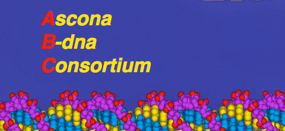Dynamique des complexes nucléoproteiques
Contacts:
Marco Pasi marco.pasi <at> ens-paris-saclay.fr
Malcolm Buckle malcolm.buckle <at> ens-paris-saclay.fr
David Perahia david.perahia <at> ens-paris-saclay.fr
PhAST
A complex hierarchy of nucleosomes dynamics (breathing, sliding, twisting, assembly/disassembly, …) controls DNA accessibility and therefore gene expression. To study these processes we have developed an original and powerful methodology: PhAST (for Photochemical Analysis of Structural Transitions).
By measuring UV-induced photochemical changes
in DNA at base-pair
resolution, we quantify the effect of histone binding
on the local structure of DNA with minimal perturbation to follow all steps of turnover in
the same conditions. We observe for the first time “hysteresis” between assembly and disassembly, suggesting that disassembly is more cooperative than assembly {Shymko et al. 2022}
ABCix
 The ABCix project, the latest effort (2021) of the Ascona B-DNA (ABC) consortium, aims to systematically characterize of the physical properties of all 2080 unique hexanucleotides, from a collection of 950, 10μs-long MD simulations.
The ABCix project, the latest effort (2021) of the Ascona B-DNA (ABC) consortium, aims to systematically characterize of the physical properties of all 2080 unique hexanucleotides, from a collection of 950, 10μs-long MD simulations.
The vast simulation effort will allow the exploration of long-term dynamics of solvated duplexes to define potential frustration effects in DNA, sequence-dependent solvent and ion atmosphere, correlation and signal transfer effects, which could not be explored in previous calculations focussed in much shorter elements.
The current ABC consortium is formed by thirteen groups (the most visible ones) from Europe and US. See also the ABCix website.